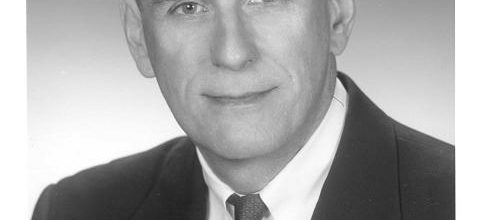Chuck Jackson on Radio Interference
[powerpress]
In this podcast, we talk with Professor Charles Jackson about the paper he presented at the TPRC conference in October, Defining Harmful Interference Efficiently. The paper proposes a way of resolving the tension between innovators who want to roll out new radio-based services and spectrum incumbents who want to maintain the status quo.
The Jackson Model
Jackson proposes a very sophisticated model for measuring radio interference in a practical and meaningful way. In summary, the model includes a number of elements:
The ex-ante measure of harm from proposed new services should be based on engineering models that take into account the design of the incumbent systems, technological constraints, the physics of interference effects, the distribution of interfering transmitters, and the geographic distribution of demand for service from the incumbent system to derive estimates of harm in economic terms—such as lost average system capacity or lost peak system capacity.
Hence, the model examines both the analog and digital domains, the properties of the incumbent system, and the economic dimensions of mitigation. The purpose is to provide certainty to bidders on spectrum auctions so they know what they can and can’t do with a license they’re interested in bidding on. This is something of a mystery today.
The Controversies
The paper examines a series of recent controversies on spectrum rights: LightSquared and GPS, M2Z and T-Mobile, WCS and Sirius XM, Ultra-Wideband, and the PCS G and H Bands. Each of the sample cases stresses different parts of the Jackson model; it probably fits the M2Z and T-Mobile case best:
The approach suggested here might have contributed to the resolution of this dispute. Whether it would have been successful would have depended on how well the FCC had specified the model system. If the FCC had included an explicit assumption regarding the filters on the AWS-1 UE receivers, then this approach could have been helpful. If the FCC had defined the passband of that filter—in particular whether it should block signals in the adjacent AWS-3 band, this approach would have helped. If, however, the FCC had used some general definition of those filters that would have allowed M2Z to argue that the filters should block transmissions in the AWS-1 band, then this approach would have added nothing. A third alternative is that the FCC would have defined the model to assume that AWS-1 UEs would be designed to protect against mobile transmissions in AWS-3.
But the model’s chief feature, defining interference in economic terms, is generally applicable.
The Tutorial
One of the best things about Jackson’s paper is the background tutorial it provides on the nature of interference. As radio technologies have evolved, so has the nature and definition of interference. Digital systems are perturbed by different signals than the ones that are most harmful to analog systems. Similarly, digital systems can be designed to adapt to and work around specific forms of interference today that would have been fatal to digital systems in the past.
The tutorial shows how the legal definition of interference has changed as well. We’ve always been able to detect interference with measurement systems, but we look at different features of the environment are today. In 1899, interference was defined simply:
The chief objection to it [use of radio for communications] is known as “interference,” which may be described as follows: When signals are being exchanged between two stations, if signals are made at a third station within the radius of effect then the signals at the receiving station of the first two mentioned become confused and unintelligible.
In 47 CFR 2.1 (c), we find the ITU definition:
1.169 harmful interference: Interference which endangers the functioning of a radionavigation service or of other safety services or seriously degrades, obstructs, or repeatedly interrupts a radiocommunication service operating in accordance with Radio Regulations (CS).
So it’s not clear that the law is progressing in step with the technology.
Alternative Interference Models
The paper examines alternative models of interference, such as Pierre de Vries’ harm claim thresholds approach. This approach is summarized in de Vries’ 2012 TPRC paper, Optimizing Receiver Performance Using Interference Limits:
The harm claim threshold approach is based on stating a received signal strength profile that, if exceeded at a specific percentage of locations and times within a measurement area, allows a claim for harmful interference to be made; or conversely, the interference below which an assignee has no enforcement recourse at the FCC.
This is a fine approach in the analog domain, but it doesn’t address the digital domain as well as the Jackson model.
How to Read Jackson’s Paper
I would recommend listening to the podcast first, and then beginning the Jackson paper with the appendix, a tutorial on interference. Then go the beginning of the paper and work your way through the history and legal background fairly quickly. Pay special attention to the controversies and the conclusion. The essence of the model is the calculation of interference in monetary terms.



